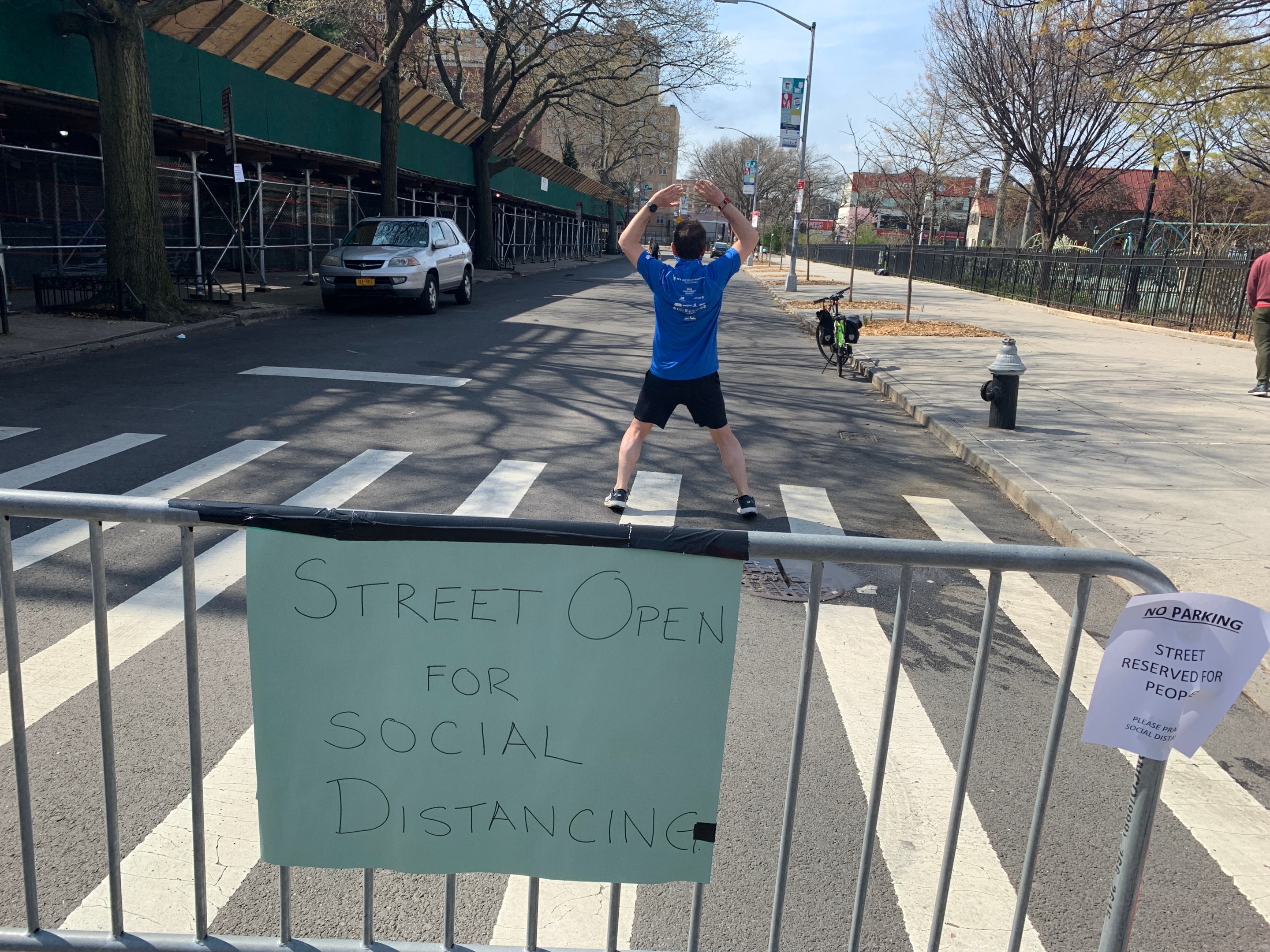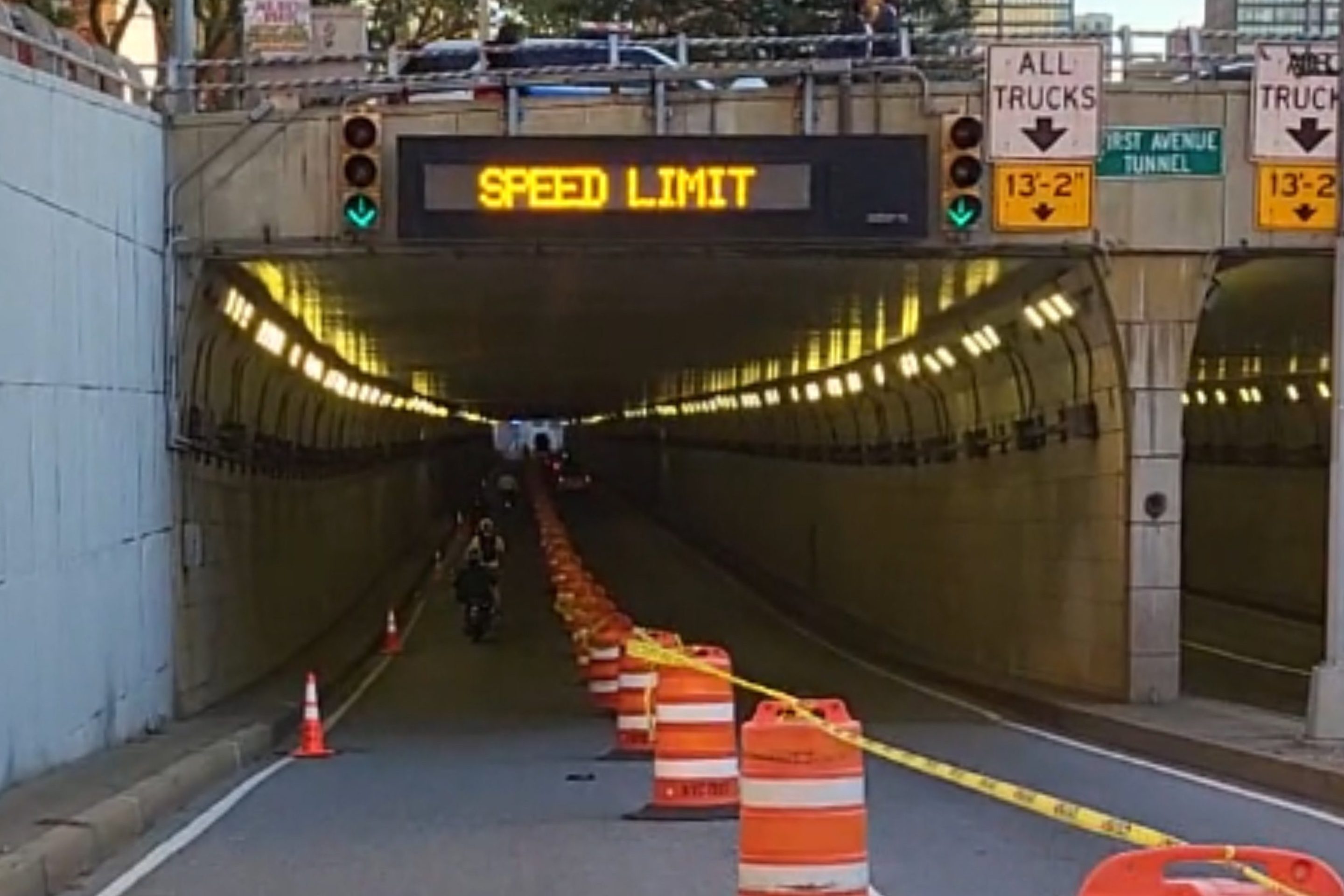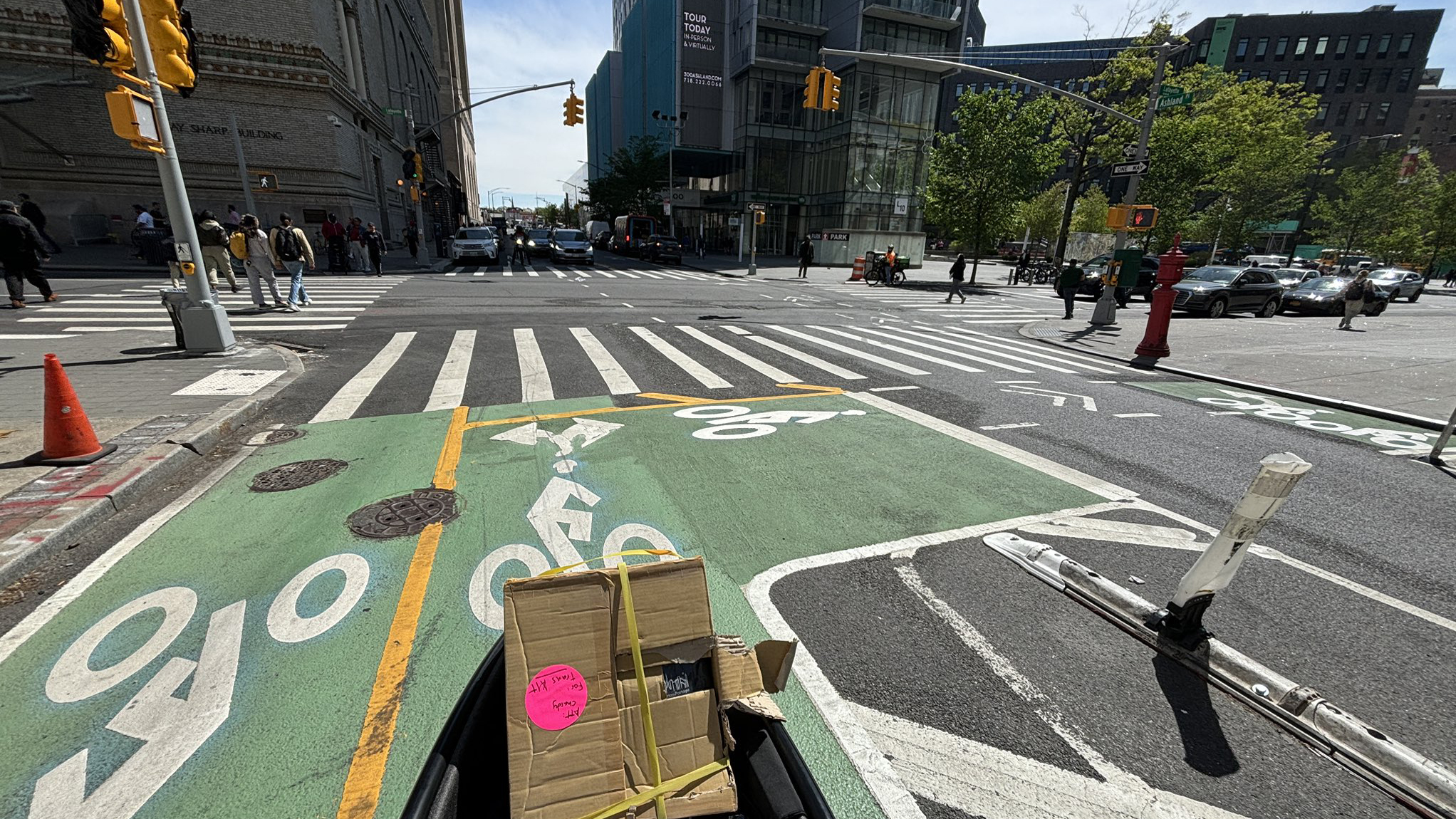He's hoping to pedal his way to power.
Comptroller Scott Stringer entered the school-transportation fray on Thursday with what he called the city's first-ever "bike-to-school" plan, a proposal for establishing dozens of miles of protected bike lanes around high schools.
Stringer's plan calls for a fast rollout of physical bike infrastructure and free rides for low-income students living inside and outside the city's bike-share network. The comptroller is asking the city to install 1.5 miles of protected bike lanes around 50 high schools in the next year, which at 75 miles would be more than three times the bike-lane lane miles installed citywide in 2019. The lanes should also connect to the city's network of protected bike lanes, according to Stringer, who wants every high school in the city to have such lanes in five years.
The bike-to-school plan is the comptroller's (and 2021 mayoral candidate) latest pro-cycling and pro-pedestrian offering, following his proposal to remake commercial districts across the city with sidewalk expansions, public plazas and hundreds of miles of bike lanes and bus lanes. The proposal builds on the popularity that cycling has gained during the pandemic as way of avoiding transit; DOT data shows that biking over the city's main East River bridges was up 22 percent this August compared to August 2019. In normal times, most high-school students take the subway or city buses to school, using free Metro Cards issued to them by the city.
The proposal, if enacted, might also boost the activity of the city's increasingly sedentary students. As Stringer's press release notes, the number of high-school students who bike or walk to school fell from 23 percent in 2009 to 18 percent in 2015, despite the fact that 40 percent of high-school students go to a school in their home district and 83 percent go to schools in their home boroughs.
"Building out bike lanes around New York City high schools and providing bikes to lower-income students would open the door to biking for hundreds of thousands of young people," Stringer said. "By taking this action, we can allow New York City’s youth to get around their city, improve health and educational outcomes, and connect with their communities."
For low-income students who don't have bikes, Stringer calls for free Citi Bike memberships for students who live in the bike-share service's area and are covered by Citi Bike's reduced-price $5 monthly membership, and a charitable effort that would get bike manufacturers to donate bikes to low-income students.
The idea of providing free bike share or even cost-free private bikes has a foundation here. In April, the Economic Development Corporation and the Department of Transportation partnered with Citi Bike and a local bike-rental company in donating bikes to frontline workers at Elmhurst Hospital. And the Better Bike Share Partnership has worked with the Bed-Stuy Restoration Corporation to help public-housing residents and SNAP recipients acquire Citi Bike memberships, an effort that one supporter of Stringer's idea highlighted in the comptroller's press release.
"After witnessing the benefits of the Better Bike Share Partnership led by the community organization Bedford Stuyvesant Restoration Corporation on the grounds of inclusion, health, economic mobility and access to another mode of transportation, I am excited to see this opportunity being extended to New York City students," Strategy for Black Lives Political Director Jerrell Gray said in a statement.
In addition to the bike lanes and free cycling options, Stringer is also proposing:
- Pedestrianizing blocks in front of 100 schools
- Using underused space in schools for indoor and outdoor bike parking
- Bike-maintenance classes so students can learn to take care of their bikes and even train for careers in bike repair
- An annual survey of student commuting patterns
- An expansion of the Bike New York Bike Safety Education Program, which now serves just 21 schools
Mayor de Blasio's school-reopening plan asked parents to have their children walk or bike to school as part of a pandemic-related effort to reduce crowding on school buses when schools reopen this month, the plan did not lay out any strategies for making that trip safe for students. He also encouraged parents to drive their children to school — despite the risks that thousands more cars on the road poses to kids. Reckless drivers killed 10 school-aged children in the city in 2019, and in February of this year seven-year-old Payson Lott was killed by a driver near his school on Pennsylvania Avenue as he walked with his mother.
Before the coronavirus pandemic, the mayor batted down the idea of closing streets in front of schools, citing what he said were the pleas of parents who had no other choice but to drive their kids to school. His attitude has changed somewhat though as his administration embraced outdoor learning, including pedestrianizing some streets in front of schools, as a way to reopen schools safely during coronavirus.
A spokesperson for de Blasio said that under the mayor's watch, 20 percent of the bike lanes built in America have been built in New York City.
"We're grateful for the Comptroller’s advocacy and proud to have given students and families car-free ways to get to school and move around the city," the spokesperson said.





